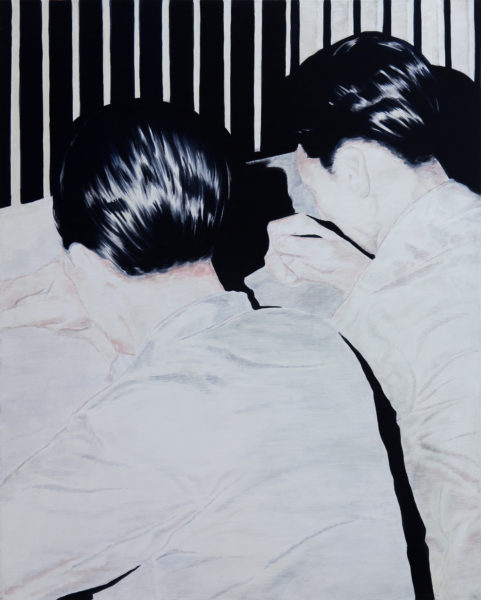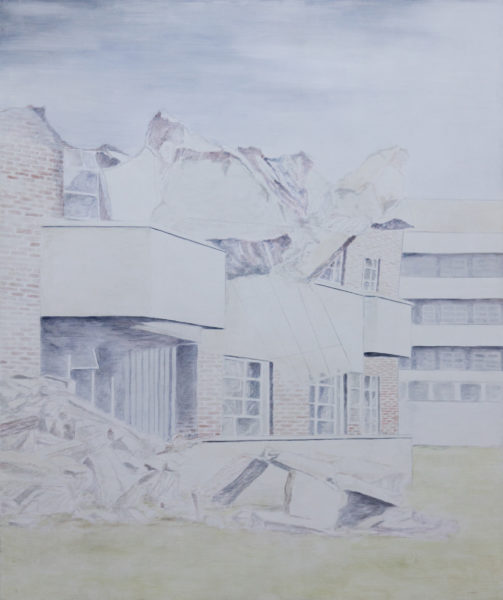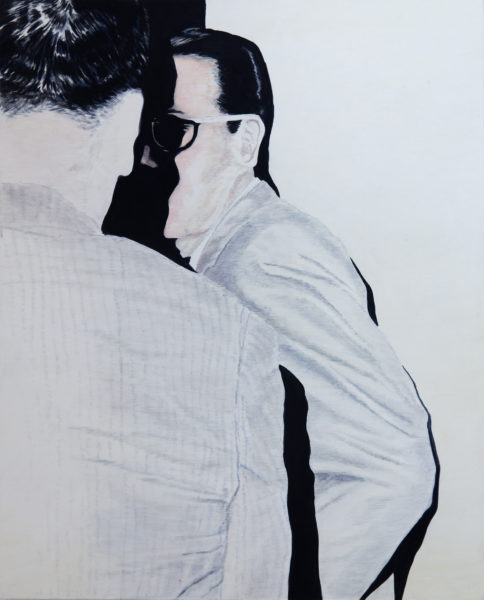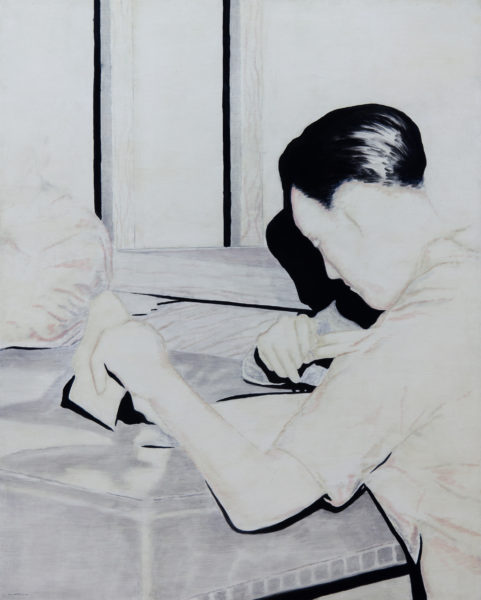
Ease Your Eyes at the Sun
Allan Balisi
1 Ease Your Eyes at the Sun is—it seems more than anything—a rather vocal and toward invitation for audience participation in witnessing a spectacle, or perhaps in this setting a call for an openness to be prompted and stirred. Looking at Allan Balisi’s “time-frozen” depictions pokes at this precise inclination. Each image, with its striking brightness, is an ode to daylight’s omnipresence: itself—its light—as its only tool to trigger a reaction from the looker; likewise, Balisi’s still, straightforward images serve as each its own individual call for that same looker’s gaze. Referencing the presence of light occurring in the spaces between the lines, Balisi openly illustrates the very sensation of staring, with determination, at a blinding fluorescence.
2 The most apparent qualities operating in these works remain to be their exact ambiguity, openendedness, and anonymity. It could well be these very strengths which then reinforce the artist’s initially blatant proposal: to ease one’s eyes at the sun: to entertain its quiet, yet forward, unassuming call for internal dialog: to look and to allow to be swayed into an immediate response: either to persevere or look away. In parallel, that is to look at these paintings with a willingness to be stimulated: to be made inquisitive: to decide whether to give each painting an interpretation or decline its offer of quiet contemplation.
3 Here, the artist voluntarily surrenders his work to the receptiveness of his viewers. While he upholds his own personal narratives which he attaches to his work, there is not a trace of that left to be grasped by the second person. The artist leaves us rather with blanks to be filled.
Emphasizing the notion of emptiness, the openness of the image, and choosing to project visuals that are vacant—yet with keen opacity—the artist acquaints us with an entry point. When one steps in front of Balisi’s image, one is alone. The only other force to be reckoned with in its presence is its call for the looker’s response—a chance the artist has secured for us and has left wide open.
4 Digressing from subjects of pronounced assertion or of obnoxious command, Balisi instead
adheres to the quiet scenes—with an interestingly severe rendition—that are found in conventional living.
5 Guided by his own personally developed heuristics and a keen, practiced eye for detail, Allan Balisi chooses his images in a somewhat liminal, psychological, fluid state. From watching films, he enters this space and finds all primary interest for the narrative escaping him, and then becoming increasingly aware of his growing attachment to some minuscule detail instead, say, some banal movement that is ultimately irrelevant to the plot like the way a gentleman may skim through some documents or how books are stacked in a particular way. Allan Balisi has, with much modesty, developed a lens for the reserved dignity of ordinary occurrences. In studying unattributed photos to refer to, it is again his unwavering interest in small particulars which enforces his choosing; finding a curious bliss in being aware of his unknowing of such photos’ contexts—he is enticed precisely by the obscurity. It is this transitional state, a moment of being in two thresholds at once, an overwhelming haze, in which Allan Balisi’s subjects are conceptualized. In this state, the artist is both conscious and unconscious: mindful of his fondness for a certain visual while also aware of his blindness to the original narrative with which these visuals come.
6 This series of mundane illustrations, as quotidian as the sun, reveal a rawness, au naturel, a sincerity that is an essence of everyday life—all in defined possession of a specific comeliness the artist has failed to ignore, and in time, has vividly captured. It is perhaps this mundanity which makes it easy for one to relate and identify, to create dialog with Balisi’s work. Here the artist points out solemnly: there is something to be admired in life’s most minute, banal details. There is something in man’s ordinariness to be praised. These are images of undisguised empathy.
—Vianca Delacruz
Works

APPEARANCES WOVEN BY OUR SENSE

UNDERSTANDING PARTITION

STARES WITHOUT SEEING

ACCOMPANYING TREMBLE

FURTHER FELICITY

ATTEMPT

BUOYANCY OF DISPLACED

BABEL

SOMEWHERE IN THE TRANSLATION, SOMETHING WILL BE LOST
Documentation




